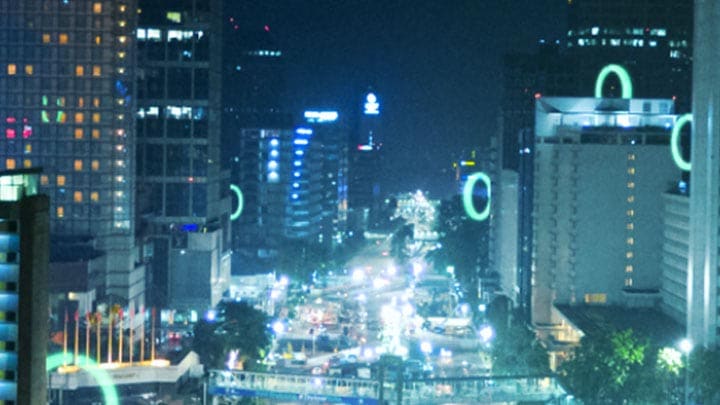Eindhoven, the Netherlands – With global emissions rising at unprecedented levels and energy prices around the globe reaching all-time highs, it is now more urgent than ever that world and business leaders at COP26 in Glasgow commit to bolder targets to tackle climate change. Signify (Euronext: LIGHT), the world leader in lighting, advocates a fast transition to energy-efficient connected LED lighting1 to accelerate decarbonization and advance digitalization for businesses and consumers. World and business leaders should focus on making changes that deliver results quickly and impact both the professional and consumer lighting markets.
More than a decade after Signify’s call to phase out the incandescent light bulb around the globe, it now calls for the transition to energy-efficient connected LED lighting as the new standard of ‘general lighting’2. The move will contribute to meeting the goals of economic recovery plans around the world, including the European Green Deal and American Jobs Plan, and the commitments nations made in the Paris Agreement.
Brian Motherway
Head of Energy Efficiency at the International Energy Agency
According to Signify’s findings, switching to LED lighting in the professional market could reduce CO2 emissions by 553 million tonnes, the amount of emissions that 25 billion trees could sequester in a year. Making the switch would also generate electricity savings of 1,132 TWh, which is equivalent to the annual electricity consumption of 494 million households. This would save a total of EUR 177 billion per year on electricity costs3.
“The current decade to 2030 will be decisive for world leaders to reach the goal of net zero by 2050. They must back their commitments by actions that deliver results on the short to medium term,” said Brian Motherway, Head of Energy Efficiency at the International Energy Agency. “We envisage that a move to more energy-efficient technologies is one of the core measures that will help us in our Race to Zero.”
Eric Rondolat
CEO of Signify
Doubling rate of building renovations to 3% per year
Upgrading lighting is the quickest and least intrusive part of building and infrastructure renovation, reducing the built environment’s lighting-related energy consumption by up to 80%, delivering carbon emissions reductions and cost savings. By moving directly to connected lighting, countries can also further their digital ambitions. It will accelerate the adoption of smart technologies in government buildings, industry, and households around the world, reaping benefits in productivity, health and wellbeing, and digital innovation. A revision of buildings codes will help to accelerate renovations around the globe.
“Interventions like the switch to renewable energy take time to yield results. Adopting energy-saving technologies can instantly relieve many of the urgent energy challenges the world is facing in electricity and fuel shortages and price hikes. We can act today by accelerating the switch to energy-efficient lighting, by doubling the rate of building renovations per year, and by mobilizing consumers to make their own significant impact in the Race to Zero,” said Eric Rondolat, CEO of Signify. “Driving energy efficiency improvements will reduce emissions and at the same time save businesses and consumers money, and create jobs.”
Raising awareness among consumers
Consumers can also play their own part in reducing CO2 emissions by switching to smart home lighting technologies and other ultra-efficient lighting innovations. To raise awareness and accelerate such a switch, Signify calls for the creation of public awareness campaigns that highlight the benefits of these lighting innovations, and to allocate some of the recovery funding for household lighting upgrades at municipal level.
Having people upgrade all their residential lighting would reduce their electricity use and CO2 emissions, and lower their electricity bills.
Learn more about our actions to accelerate climate action here: Sustainability | Signify Company Website
1 ‘Connected LED lighting’ is defined as LED lighting that is connected to software controls or is connectable.
2 ‘General lighting’ is defined as everyday lighting: bulbs and luminaires for home and professional settings (e.g. offices, commercial buildings, retail, stadiums, road and street, bridge, park and tunnel lighting, etc). It is acknowledged that there will be some non-LED conventional lighting still sold and used for specialist applications, where there is no LED alternative.
3 Global data presented here is a simulation within the framework of the Green Switch conventional light point conversion model, which is a program run by Signify to help its customers accelerate the switch to energy-efficient lighting products, systems and services. All figures and data presented here are illustrative and based on forecasts and assumptions.
Signify Corporate Communications
Elco van Groningen
Tel: +31 6 1086 5519
E-mail: elco.van.groningen@signify.com
Signify (Euronext: LIGHT) is the world leader in lighting for professionals, consumers and the Internet of Things. Our Philips products, Interact systems and data-enabled services deliver business value and transform life in homes, buildings and public spaces. In 2024, we had sales of EUR 6.1 billion, approximately 29,000 employees and a presence in over 70 countries. We unlock the extraordinary potential of light for brighter lives and a better world. We have been in the Dow Jones Sustainability World Index since our IPO for eight consecutive years and have achieved the EcoVadis Platinum rating for five consecutive years, placing Signify in the top one percent of companies assessed. News from Signify can be found in the Newsroom, on X, LinkedIn and Instagram. Information for investors is located on the Investor Relations page.
